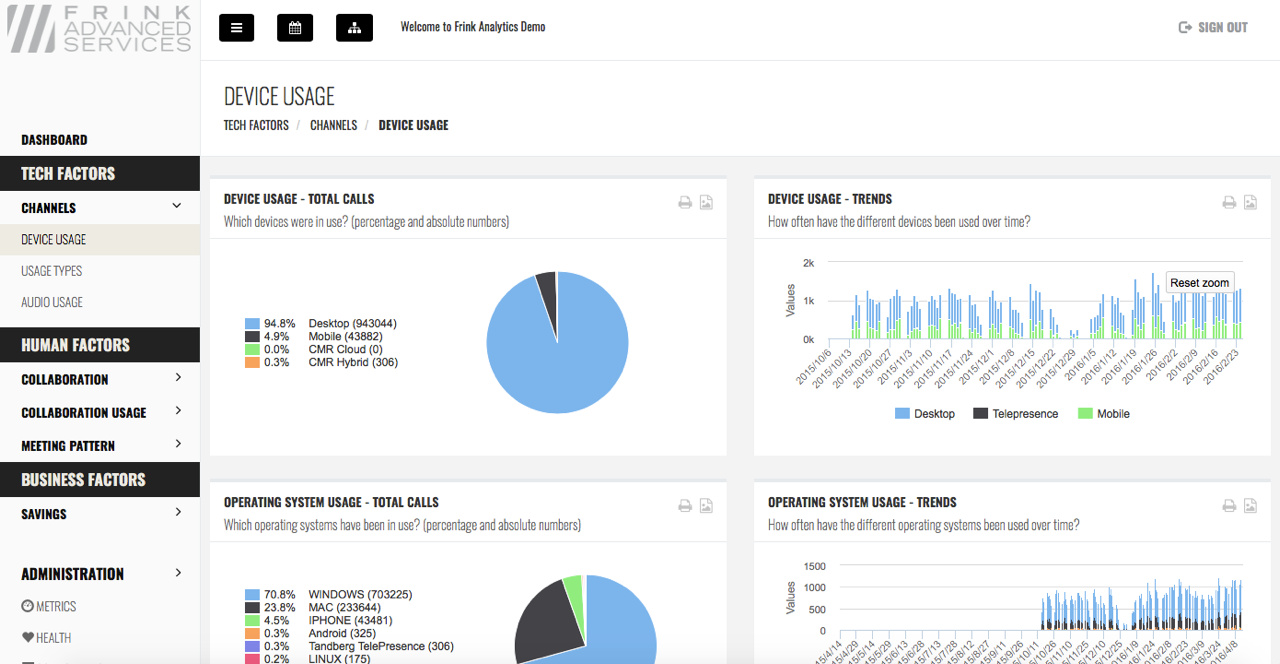Below you will find pages that utilize the taxonomy term “Human-Centered Evaluation”
CoSi4U - Human Factors in Using Collaboration Systems in Companies

The CoSi4U (Human Factors in Using Collaboration Systems in Companies) project is a cooperation project with FRINK Advanced Services GmbH. FRINK Advanced Services GmbH developed a tool for analysing collaboration data in companies. The goal of the project is to support the company in finding a user-friendly design in order to help analysts to handle this data and to make relationships between them visible.
Team: Simone Kriglstein (contact person) and Nikolaus Suchy
CVAST - Centre of Visual Analytics Science and Technology

The Centre of Visual Analytics Science and Technology (CVAST) is one of the Laura Bassi Centres of Excellence. The goals of CVAST are twofold. The first goal is the integration of the outstanding capabilities of humans in terms of visual information exploration with the enormous processing power of computers to form a powerful knowledge discovery environment. The second goal is to scientifically assess the usability and utility of such discovery environments while bridging the gap between theory and practice for selected application scenarios. To achieve these goals we cooperate with several partners from industry.
PAIR – Pairwise Visual Comparison of Directed Acyclic Graphs: A HCI Perspective
The goal of this project is to improve visualizations for pairwise network comparisons via new cognition-driven design guidelines. This project will specifically concentrate on the visual comparison of directed acyclic graphs in node-link diagrams. Such comparison is needed, for example, in the analysis of phylogenetic trees in biology or in the assessment of contagion in financial networks. In these cases, the domain experts concentrate on finding commonalities and differences between the two networks being compared. This analysis is often undertaken in a visualized form. Visual exploration enables to identify where the differences are located and thereby to extract insights from these differences. Effective visual network comparison requires a well-designed visualization. Effective visualization uses guidelines, which are inter alia derived from research in cognitive psychology and human-computer interaction (HCI). Until now, HCI research has mainly focused on deriving guidelines for the visualization of single networks. There are still many open research questions concerning the comparison of two or more networks in node-link diagrams
Urban Food Spots

Urban Food Spots – Development of the basics for gender and diversity sensitive cooling stations for foodsharing in urban areas (2015 – 2017), financed by: Österreichische Forschungsförderungsgesellschaft (FFG)
70.000 tons of originally packed or opened food of households, industry or trade, are disposed of into Viennese residual waste, while at the same time 22,7 % of the inhabitants are at risk of poverty. To take counteractive measures, this project develops the base for an area-wide, low-threshold offer to share food on a local level, including all relevant gender and diversity aspects in the development of cooling stations. The so called UrbanFoodSp ots consist of a cooling station and an information system. The UrbanFoodSpots assemble the needs of the various groups of users and will be developed to be realised in different places and organisational forms.
Viz4PAIS - Visualization Techniques for Process-Aware Information Systems

The Viz4PAIS (Visualization Techniques for Process-Aware Information Systems) project is an initiative from the Workflow Systems and Technology Research Group, Faculty of Computer Science, University of Vienna and we are one of their partners. The goals of the project are (a) to develop and design user centered visualization approaches and (b) to create a community to unify and nurture the development of process visualization topics as a continuing research area.